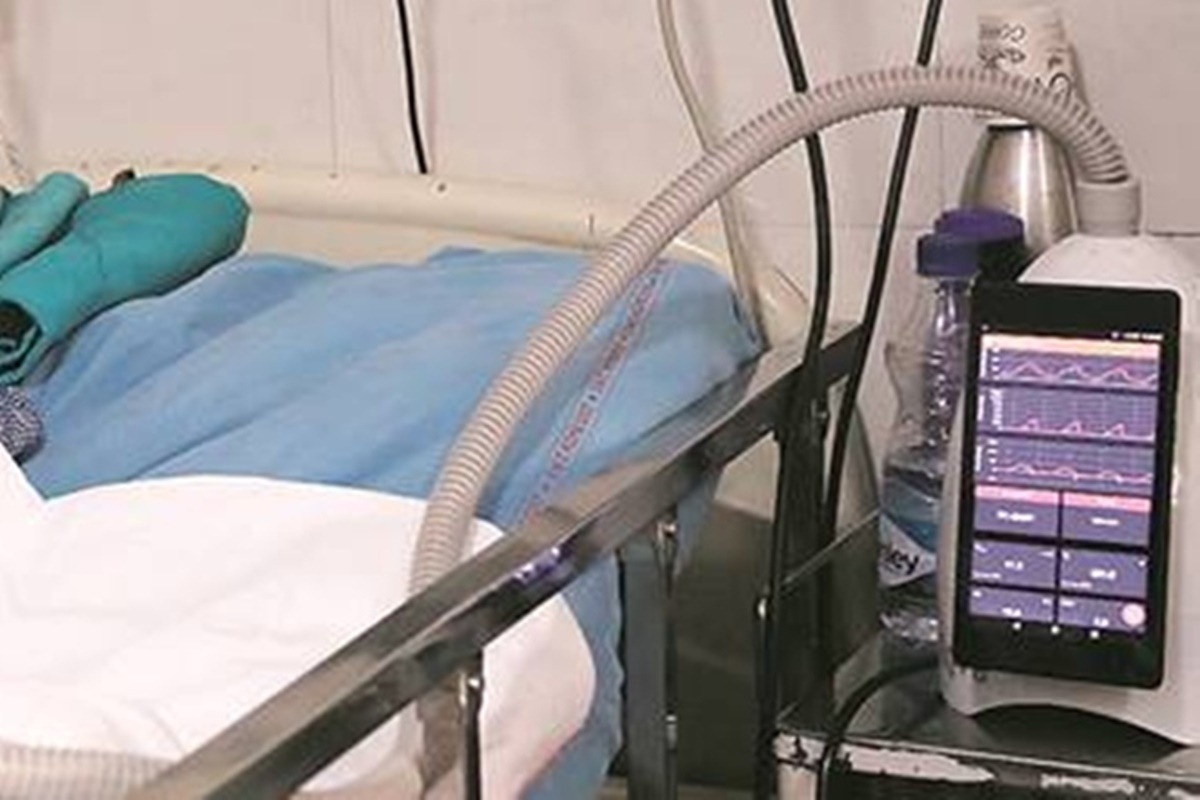 Earlier, medical experts had warned that less than 2% of full-blown Covid patients would need mechanical ventilator support.
Earlier, medical experts had warned that less than 2% of full-blown Covid patients would need mechanical ventilator support. A year into the Covid-19 pandemic, several manufacturers of critical medical equipment have realised that the boom time has slowly but surely evaporated, turning into a period of distress.
Among them are manufacturers of ventilators who had responded to the global panic over the need for the life-saving equipment. They are now staring at huge inventories, a saturated market and, for some, deep financial crisis.
The numbers speak for themselves. Before the pandemic, the sector had eight manufacturers with an annual capacity to supply 3,360 ventilators. The Covid crisis saw nine more players enter the field, raising the manufacturing capacity to 396,260 a year, according to industry data. And the one question they are now asking: What will happen to all these ventilators?
There are several reasons for the sharp fall in the demand for ventilators and the over-capacity built during the year. The first is medical. As reported earlier by The Indian Express, interventionists and medical experts had warned that less than 2% of full-blown Covid patients would need mechanical ventilator support.
Warning of glut came earlier
All these months, medical device federations had been warning the Union Health Ministry about an impending glut, which many other countries like the US too had begun to experience by mid-2020. The Association of Indian Medical Device Industry (AiMeD) had written to the Ministry last July, asking for the ban on export of ventilators to be lifted.
Globally, it is now acknowledged that other forms of oxygen therapy — oxygen concentrator to CPAP to BiPAP where no incubation is required — have been life-savers during the pandemic.
The second reason is the manner in which market forces turned against ventilator manufacturers. In April 2020, owing to a projected shortage of the machines despite the scaled-up production, the government imposed an export ban on ventilators. The ban was lifted in August with some restrictions, but was only fully lifted in December 2020.
Vishwaprasad Alva, Managing Director of Mysuru-based Skanray, said: “A few months into the pandemic and we had sizable orders for ventilators from the US, countries in Europe and others like Russia, Poland and Brazil. But there was a blanket ban on exports. By the time the ban was lifted in December, these orders had dried up and countries like China had flooded world markets.”
While Skanray had announced a tie-up with BEL for production of ventilators, another company, Delhi-based AgVa Healthcare, entered into a joint venture with Maruti. Its co-founder, Professor Diwakar Vaish, said that after completing 10,000 orders for the government, other orders simply dried up. “Ventilators were the need of the hour when Covid began and that hour is gone. We had substantial orders for exports, but were not allowed to sell abroad,” he said.
“We have the capacity to manufacture 14,000 ventilators every month, but are only trying to dilute existing stocks. There have been huge financial implications for us, heavy loans and losses to the tune of Rs 100 crore,” Vaish said.
Another leading manufacturer, Sashi Kumar V, Managing Director of Chennai-based Phoenix Medical Systems, said even their first orders placed through the Andhra Pradesh Medical Technical Zone have not been fully picked up.
“At our Vizag plant, we scaled up capacities for producing 500 ventilators a month, but there are simply no orders. We are trying to dilute our inventory of 1,000 ventilators by trying to sell them in ones and twos to the private healthcare sector,” he said.
Asked about the woes of ventilator manufacturers, Dr V K Paul, member of NITI Aayog and head of the Centre’s Covid Task Force, said manufacturers of critical care equipment like ventilators should adopt a “medium to long-term” approach instead of only looking at short-term profits.
His advice: “Indian ventilator manufacturers must stay in the business to show the technology prowess they have. They should continue to be part of the global supply chains though they will sell in smaller capacities. You cannot look back during a crisis of this magnitude. The right way is to look forward.”
All these months, medical device federations had been warning the Union Health Ministry about an impending glut, which many other countries like the US too had begun to experience by mid-2020. The Association of Indian Medical Device Industry (AiMeD) had written to the Ministry last July, asking for the ban on export of ventilators to be lifted.
“More manufacturers are likely to resume production (after the lockdown) which may result in a supply glut of ventilators, leading to worries of huge losses and worries of non-performing assets in a nascent industry,” the AiMeD wrote.
Rajiv Nath, Forum Coordinator of AiMeD, told The Indian Express: “Manufacturers of ventilators are feeling disappointed at the lengthy delays in lifting export restrictions while allowing zero-duty import of ventilators, a double whammy. Orders from the central government and state authorities suddenly petered out post June/July, leaving manufacturers with huge investments and inventories. Such products should now be covered under the PLI (Production-Linked Incentive) scheme to support this tremendous effort at rapid indigenisation.”
Skanray’s Alva said he is aware of many hospitals where large numbers of ventilators are lying packed in warehouses and stores due to oversupply, He suggested that these be put on “stand-by” mode in hospitals.
On March 8, Alva wrote to the Cabinet Secretary and Health Ministry about the huge stockpile of ventilators lying “idle” and “unboxed”.
“Please note that more than 8,000 of the 18,000 ventilators we had in the whole country when the pandemic hit were defective and unusable. We will face the same with the installation of 60,000 ventilators we have now, if there is another emergency in the next two years. Most of them will be not usable, defective or even untraced,” he wrote.